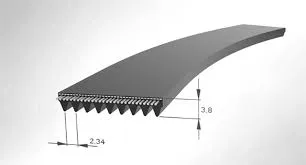- Arabic
- French
- Russian
- Spanish
- Portuguese
- Turkish
- Armenian
- English
- Albanian
- Amharic
- Azerbaijani
- Basque
- Belarusian
- Bengali
- Bosnian
- Bulgarian
- Catalan
- Cebuano
- Corsican
- Croatian
- Czech
- Danish
- Dutch
- Afrikaans
- Esperanto
- Estonian
- Finnish
- Frisian
- Galician
- Georgian
- German
- Greek
- Gujarati
- Haitian Creole
- hausa
- hawaiian
- Hebrew
- Hindi
- Miao
- Hungarian
- Icelandic
- igbo
- Indonesian
- irish
- Italian
- Japanese
- Javanese
- Kannada
- kazakh
- Khmer
- Rwandese
- Korean
- Kurdish
- Kyrgyz
- Lao
- Latin
- Latvian
- Lithuanian
- Luxembourgish
- Macedonian
- Malgashi
- Malay
- Malayalam
- Maltese
- Maori
- Marathi
- Mongolian
- Myanmar
- Nepali
- Norwegian
- Norwegian
- Occitan
- Pashto
- Persian
- Polish
- Punjabi
- Romanian
- Samoan
- Scottish Gaelic
- Serbian
- Sesotho
- Shona
- Sindhi
- Sinhala
- Slovak
- Slovenian
- Somali
- Sundanese
- Swahili
- Swedish
- Tagalog
- Tajik
- Tamil
- Tatar
- Telugu
- Thai
- Turkmen
- Ukrainian
- Urdu
- Uighur
- Uzbek
- Vietnamese
- Welsh
- Bantu
- Yiddish
- Yoruba
- Zulu
Οκτ . 11, 2024 10:20 Back to list
installing new serpentine belt
Installing a New Serpentine Belt A Step-by-Step Guide
The serpentine belt is a crucial component in your vehicle’s engine, responsible for powering multiple accessories like the alternator, power steering pump, water pump, and air conditioning compressor. Over time, this rubber belt can wear out, crack, or stretch, which may lead to various mechanical failures. Replacing the serpentine belt is essential for maintaining the health of your vehicle. Here’s a comprehensive guide on how to install a new serpentine belt.
Tools and Materials Needed
Before you begin, gather the necessary tools a ratchet set, a serpentine belt tool or a wrench, and a new serpentine belt. It’s also advisable to have a flashlight and safety goggles handy to ensure a clear view and protect your eyes.
Step 1 Safety First
Start by parking your vehicle on a flat surface and engaging the parking brake. For added safety, disconnect the negative terminal of the battery to prevent any electrical accidents while working on the engine.
Step 2 Locate the Serpentine Belt
Open the hood and locate the serpentine belt. You can usually find it at the front of the engine attached to various pulleys. If you have difficulty identifying it, consult your vehicle's manual for a belt routing diagram.
Step 3 Release Tension on the Belt
To remove the old serpentine belt, you need to relieve the tension. Locate the tensioner pulley, which is fitted with a tensioning mechanism. Using your serpentine belt tool or a wrench, rotate the tensioner counterclockwise. This will loosen the belt, allowing you to slip it off the pulleys. Once the belt is free, carefully release the tensioner.
installing new serpentine belt

Step 4 Remove the Old Belt
Take out the old belt from the pulleys, ensuring you remember the routing path. If necessary, use the routing diagram you located in Step 2 as a reference.
Step 5 Install the New Serpentine Belt
Position the new serpentine belt over the appropriate pulleys following the same path as the old belt. Ensure it is properly seated in the grooves of each pulley. This is essential for optimal performance and to avoid slippage.
Step 6 Reapply Tension
Once the new belt is in place, use your tensioner tool again to rotate the tensioner, allowing you to slip the belt back onto the tensioner. Ensure the belt is tight and correctly aligned.
Step 7 Final Checks
Double-check that the serpentine belt is properly positioned and secure. Reconnect the negative battery terminal and start your vehicle. Listen for any unusual noises and observe the belt’s operation to ensure everything is functioning properly.
Conclusion
Replacing a serpentine belt might seem daunting, but with the right tools and a bit of patience, you can perform this maintenance task yourself. Regularly checking and replacing your serpentine belt can save you from costly repairs down the road and ensure your vehicle runs smoothly.
-
Korean Auto Parts Timing Belt 24312-37500 For Hyundai/Kia
NewsMar.07,2025
-
7PK2300 90916-T2024 RIBBED BELT POLY V BELT PK BELT
NewsMar.07,2025
-
Chinese Auto Belt Factory 310-2M-22 For BMW/Mercedes-Benz
NewsMar.07,2025
-
Chinese Auto Belt Factory 310-2M-22 For BMW/Mercedes-Benz
NewsMar.07,2025
-
90916-02660 PK Belt 6PK1680 For Toyota
NewsMar.07,2025
-
drive belt serpentine belt
NewsMar.07,2025

